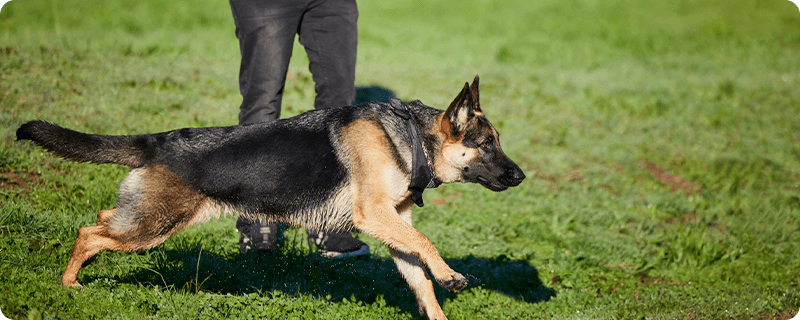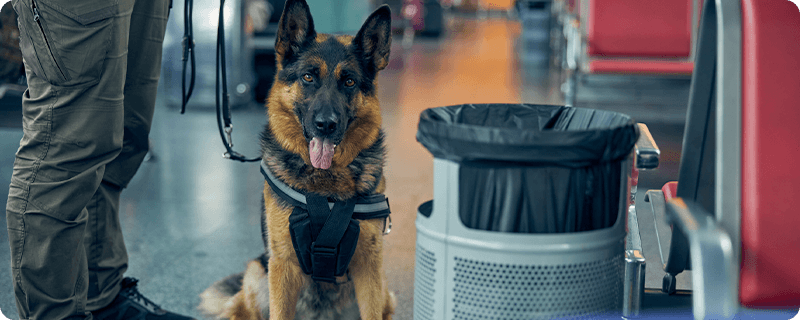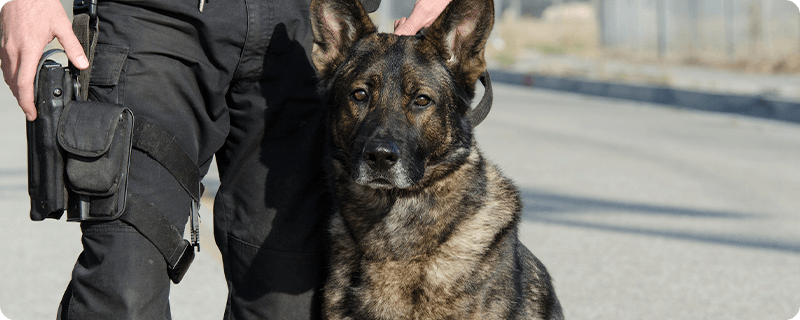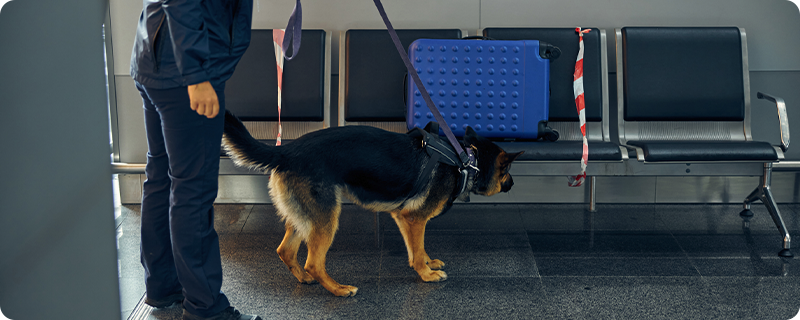Personal Protection Dogs: How to Protect Yourself 24 Hours a Day

Personal protection dogs are the perfect solution for people who feel vulnerable and unsafe in their day-to-day environments.
Personal Protection Dogs: How to Protect Yourself 24 Hours a Day
“It’s easier to command a dog than it is to be a marksman.”
— Mark Bosque, K9 X-Factor founder
Personal protection dogs are the perfect solution for people who feel vulnerable and unsafe in their day-to-day environments. Would you like a mobile and active layer of personal protection 24 hours a day?Looking for a way to stop potential threats wherever you go? Many people are looking to protect themselves and their families, especially in urban areas. Dogs for personal protection can give you a layer of protection that traditional and modern security devices can’t offer. This article will help you understand the benefits of using dogs for your personal protection around the clock.
What is a personal protection dog?
A personal protection dog is a security tool that cannot be taken from you. It is active—not passive, like a video surveillance or alarm system. The mere presence of a dog deters a threat. A canine will bark and scare the perpetrator off. The dog will actively approach the threat until told to stop or release. It will bark or bite until it hears the release command. Dogs for personal protection are better than guns because you don’t have to worry about hitting the target—that’s the dog’s job. Additionally, when you don’t use a gun, you’ll have less liability (rather than facing a potentially damaging lawsuit). I’ve never seen a protection dog maul a perpetrator. The dog is trying to please the handler and not do any more damage than necessary. It just wants to scare the intruder until the intruder exits the scene.
For example, if a burglar sees a dog, the burglar asks: “If I can go through the door, there’s going to be a dog unleashing damage on me. Why would I even try to go into this house?”
What other tool, device, or system has your back 24/7?
Let’s take carjacking, for instance. With a protection dog, you are always secure in your car, driving or parked. And you don’t have to worry about your car being broken into—your personal belongings will be safe. Who wants to face off with an 85-pound German Shepherd? Who should own a K9 personal protection dog? At the most basic level, individuals and families are perfect consumers for protection dogs. They feel vulnerable and unsafe because they think something might happen to them. They want personal protection by a dog that is obedient in the home or wherever they travel so they can feel safe 24/7. They seek a layer of protection that is mobile and active. They want to deter any potential threats and, if necessary, stop the threat. The goal? To feel peace.
Is living with a K9 protection dog different from living with a family pet?
Yes . . . and no.
You still must feed it, take care of it, and exercise it. And love it! Here’s the critical difference—the protection dog must be your shadow. You want the protection dog to be always with you, until you tell it otherwise.
Here’s an example.
If you have a stranger jumping your fence, it’s up to you to guide your protection dog to do what it should do. You have trained it to confront that scenario. On the other hand, your family pet may or may not react to that scenario. It will do what it wants to do. It is not trained to confront certain scenarios.
When you leave the house, a protection dog is going to be focused on you and the external environment. A pet dog is only concerned about its environment. What’s the difference between a $25,000–$35,000 protection dog and a $75,000 protection dog?
Not much!
Both dogs will provide equal protection in every environment.
- Clear intruders from your house
- Bark on command
- Bark and hold on command
- Bite and hold on command
- Release on command
- Neutral on command (be quiet)
- Defend owner from vehicle attacker
- Provide bodyguard protection
- Track and detain
- Obey off-leash at an advance level
- Health check certified
- Family-friendly
- Socially and environmentally sound
A lot of protection dog companies sell you on the dog’s lineage. That’s why they often charge higher fees. Lineage is important, but that doesn’t necessarily equate to a better dog. Here’s the bottom line. The dog needs to have three traits:
- Good temperament (family-friendly)
- The ability to go defensive when called upon
- Excellent obedience
Why do K9 trainers import dogs from Europe instead of using American German Shepherds?
Typically, the working dogs coming from Europe are bred to a higher standard. They can accomplish the work that they’re required to do. European dogs are bred for work and drive, while American dogs have turned into show line and pet dogs. Typically, the reason I’m importing dogs from Europe is for work ability and health. They are held to a higher breeding standard there. OK, so how do I buy a protection dog and how do I avoid getting ripped off? There are at least three criteria you need to meet so you know you’re getting the best dog for your money.
1. The most important criterion is doing your research. If you’re considering buying from a particular vendor or company, you need to research the company’s history and see if there are any reviews or people who’ve had positive or negative experiences purchasing a dog.
2. The second thing is looking at the dog itself, seeing if it adds up to all the training that the dog can do. The trainer should be able to demonstrate the dog’s capabilities to you.
3. The third criterion is the health of the dog. There are health tests that every breeder and seller should do when selling a dog. The elbows and hips should be clear (no deformities) and should be X-rayed. The heart should also be checked. You might think a personal protection dog will randomly attack people One of the myths that has been around for decades is that protection dogs might randomly attack people.
That’s not true. Personal protection dogs receive a high level of obedience training. This means that they only attack when commanded and when necessary to do so. The dog is focused on protecting the owner—not itself. Most people think a pet dog is focused on protecting the owner—but it is not. It is mostly focused on protecting itself.
Summary
Now you know the difference between a personal protection dog and a family pet dog. Personal protection dogs can give you a layer of protection that traditional and modern security devices can’t offer.
“It’s easier to recall a dog than recall a bullet.”
— Mark Bosque, K9 X-Factor founder
Next step
Mark Bosque is a security consultant and owner of K9 X-Factor in the San Francisco Bay Area, California. His company can reduce hospital and school security concerns with canine security teams. K9 X-Factor partners with hospitals and schools seeking an alternative approach to protecting their employees while reducing expensive liability issues related to having armed security guards.
K9 X-Factor is unique because your hospital or school gets “friendly first” dogs without sacrificing patients’, students’ and employees’ safety. Other canine security companies use dogs that are rewarded to go after a threat. While that can be useful in dangerous situations, those dogs lack the social temperament to be people-friendly.
K9 X-Factor dogs are friendly with all people—including children and seniors—and are trained to address threats instantly. Visit our website for more information. Whether you want to buy a canine or lease a security canine team from K9 X-Factor, message me to see if a canine security team is right for you.






